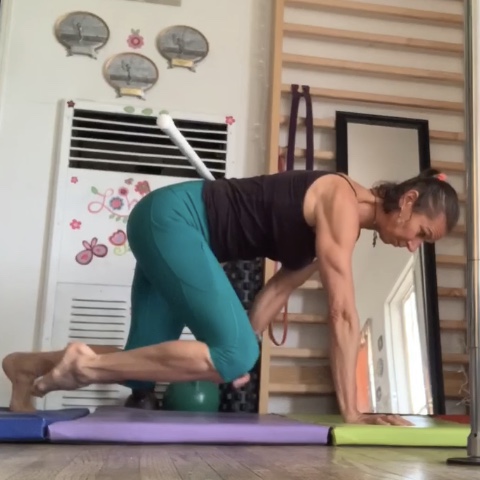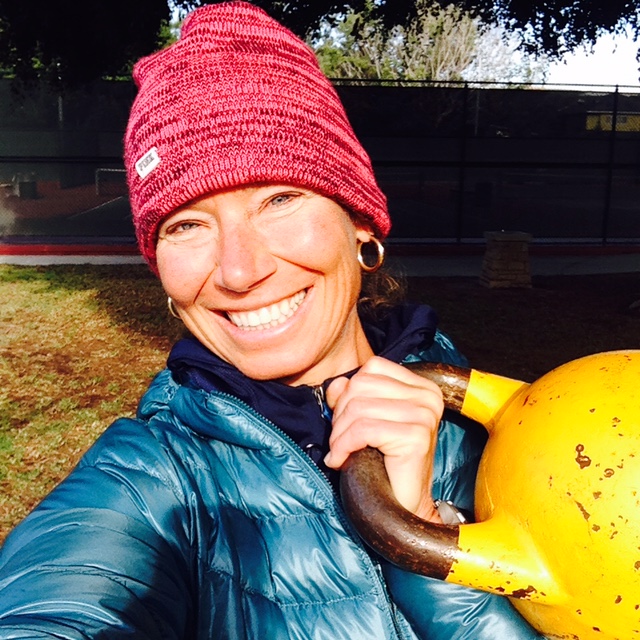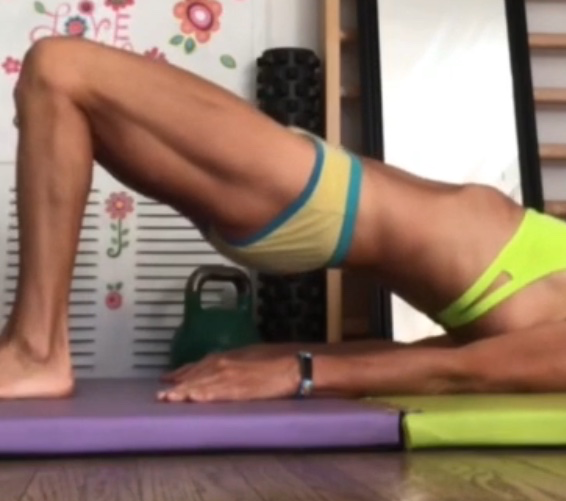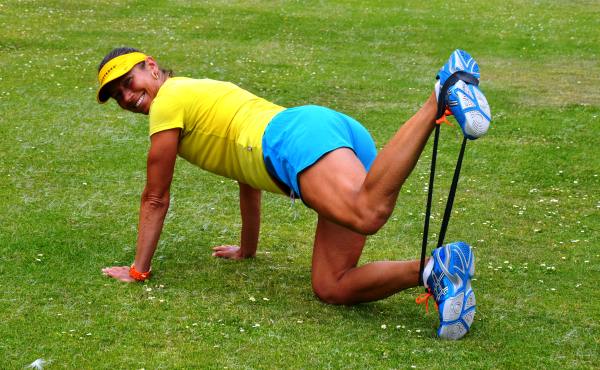Quadrupled core conditioning can be something surprisingly difficult for you.
You even may not be able to do it entirely, yet.
It is a fantastic strengthening exercise for your deep core, shoulders, serratus anterior, hands, wrists, feet, the entire upper body, and the hips.
What else can we ask? You get a serious “bang for your buck” today.

The exercise will remind you of crawling, which we were doing effortlessly as children before we started to walk. Today, as a dysfunctional adult (and we all are, more or less) you will find it a killer and nothing like a child play.
There are different versions of “bear crawls” out there, and you have maybe seen them, but we won’t be crawling today. We are going to prepare your body and strengthen everything needed for future crawling without compensations. You need a significant amount of deep core strength and stability.
Also, there will be an intense engagement of your serratus anterior, an important muscle on the side of your chest under your armpit that assist to stabilize the shoulder blade in all overhead movements, such as tennis serve or smash, weight lifting above your head, aerial arts, arm balancing, yoga, or lifting a baggage in the airplane.
Quadrupled Core Conditioning
There will be two versions: a warm-up (kneeling and simple) and a work (elevate and intense). The kneeling version is to get used to the movement, wake-up your nervous system to connect with your deep core and TVA (transversus abdominis muscle) and to enjoy.
The elevated version with the knees lifted above the ground will be surprisingly intense, possibly tricky, or upright impossible (for now). Do not worry if you can or cannot do it right now. Keep trying and practicing, and as you get stronger, it gets better, and you will enjoy it eventually.
The full description is in the video below:
.
.
1) Get down on your hands and knees, with hands directly under your shoulders and knees under your hips
2) Keep your spine neutral, push the ground away with your hands (to engage your serratus).
3) Tuck your toes.
4) Elongate your neck, and tuck your chin slightly.
5) Place a stick (broomstick, hockey stick) on your back and keep it there ALL THE TIME. If your stick falls, you are not engaging your deep core muscles correctly. Put the stick back and focus more.
Kneeling Quadrupled Core Version
1) Lift your hand and touch the opposite shoulder slowly, then gently put it back down. Alternate for 10 repetitions.
2) Move one leg slowly behind you until straight, engaging your glute and quadriceps. Then bring it slowly back. Alternate for 10 repetitions. If you drop the stick, put it back on, and continue.
3) Move one knee forward and touch it with the opposite hand and return slowly. Alternate for 10 repetitions.
Elevated Quadrupled Core Version
Let’s get to the main work now. We will do the same three sequences, but this time with the knees slightly elevated, 1-2 inches above the ground, not more than that. The knees (and hips) will want to lift high up to escape the torture, but do not let them. Make also sure that the knees stay directly under the hips.
1) Touch your hand to the opposite shoulder, alternating for 10 repetitions. You may find this hard, losing your stick (the hips are tilting, because of the deep core muscles are not engaging correctly). Try to figure out what to do and engage them to keep the stick on your back. Do everything slowly.
2) Lift one leg straight behind you, engaging the glutes, alternating for 10 repetitions. You will find this one easier than the first one, most probably because your brain figured out how to use to deep core muscles by now. Your knees and hips will want to lift, don’t let them.
3) Move one knee forward and touch it with the opposite hand. You will find this one very hard because you only have two points of contact (one foot/toes and the opposite hand). Here, you have to engage strongly the core and the serratus muscle (push the ground away really hard). Slowly return to the starting position and alternate for 10 repetitions. In this one, your knees will want to lift high up off the ground. Don’t let them.
Feel free to do this exercise daily. Be patient in the beginning; don’t give up just because you “cannot do it.” Almost nobody can do it on the first try. Also, don’t dump the stick just because it is “too difficult.” Without the stick, you won’t be able to tell if you are connecting with your core, or compensating with other muscles. After 5-10 sessions, you will feel so much better and stronger. Having a good control, strength, and stability of your deep core muscles will transfer to your other athletic endeavors and life. Your body will function better, and you will feel less stiff, tight, and achy.
I would love to hear your opinions and successes on this quadrupled core torture, feel free to share them with me at suzanna@tennisfitnesslove.com
Would you like to read about more simple and effective exercises and stretches to improve your tennis game or overall fitness? Look at “Tennis Fitness for The Love of it” on Amazon. A little book that fits your bag or pocket and you can revisit it often.
.




